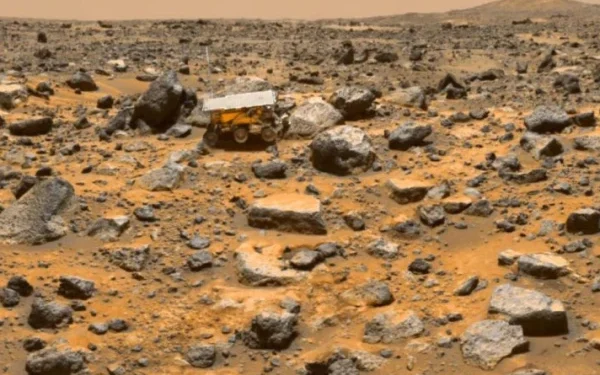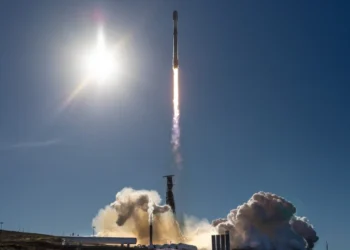Mars, our neighboring red planet, has long captivated scientists and stargazers alike. Once envisioned as a potentially habitable world, Mars is now an arid, cold desert planet. But geological evidence clearly shows that billions of years ago, liquid water flowed across its surface—forming rivers, lakes, and possibly even vast oceans. So what happened to Mars’ water? Where did it all go? And why does the planet now appear so barren?
This article delves into the scientific explanations behind the disappearance of water on Mars, explores the planet’s climatic and atmospheric evolution, and sheds light on ongoing research that continues to uncover Mars’ hidden hydrological past.
Martian Water: A Once-Flowing Reality
Though Mars today is a cold and dry world, it wasn’t always this way. Multiple NASA missions and orbiters, including Mars Reconnaissance Orbiter and Curiosity Rover, have discovered ancient river valleys, lake beds, sedimentary layers, and mineral deposits that form only in the presence of water.
Evidence of a Watery Past:
- Valley networks suggest long-term surface runoff.
- Deltas and fan-shaped sedimentary formations resemble Earth’s river-lake systems.
- Hydrated minerals, such as clays and sulfates, which require water to form.
- Polar ice caps, made of water and carbon dioxide ice.
Despite this rich hydrological history, Mars no longer has surface water in liquid form. So what caused this drastic transformation?
1. Disappearance of the Magnetic Field and Loss of Atmosphere
One of the most pivotal events in Mars’ climate evolution was the loss of its global magnetic field.
Role of the Magnetic Field:
Earth has a strong magnetic field generated by its molten iron core. This magnetic field shields our atmosphere from the solar wind—a stream of charged particles emitted by the Sun.
Mars, however, lost its magnetic field around 4.2 billion years ago. Once this natural shield disappeared, solar winds began stripping away the planet’s atmosphere—a process observed by NASA’s MAVEN (Mars Atmosphere and Volatile EvolutioN) mission.
Consequences of Atmospheric Loss:
- The thin Martian atmosphere could no longer support surface pressure required to keep water in liquid form.
- Without protection, ultraviolet radiation broke down water molecules (H₂O) into hydrogen and oxygen.
- The light hydrogen atoms escaped into space, a process known as atmospheric escape.
The result? Mars became increasingly dry, cold, and incapable of retaining liquid water on its surface.
2. Mars’ Low Gravity Contributed to Water Loss
Mars is significantly smaller than Earth, with about 11% of Earth’s mass and only 38% of its surface gravity. This low gravitational pull made it easier for gases and water vapor to escape into space, especially as the atmosphere thinned.
Impact of Low Gravity:
- Mars could not hold on to its atmosphere as effectively as Earth.
- Water vapor and other volatile compounds, once in the atmosphere, drifted into space due to low gravity.
- Over millions of years, this led to a gradual depletion of the water inventory on the Martian surface.
This gravitational limitation, in combination with solar wind and lack of magnetic protection, created a hostile environment for water to persist.
3. A Cold and Dry Climate Took Over
As Mars lost its atmosphere, global temperatures dropped dramatically. A thinner atmosphere retains less heat, resulting in a cold and dry planetary climate.
How Cold Is Mars Today?
- Average surface temperature: -63°C (-81°F)
- Can drop to -125°C (-195°F) near the poles
Consequences for Water:
- Water could no longer exist in liquid form; it either froze into the ground or sublimated (transformed directly from ice to gas).
- Today, most of Mars’ water exists in frozen form at the polar ice caps and beneath the surface in the form of permafrost.
Despite this, several spacecraft have detected seasonal changes in surface features that suggest briny liquid water may occasionally appear in specific conditions.
4. Chemical Reactions Trapped Water in Rocks
Not all water on Mars escaped into space. A significant portion underwent chemical transformation.
Interaction with Martian Minerals:
- Water interacted with basaltic rocks, forming hydrated minerals like clays (phyllosilicates), carbonates, and sulfates.
- These reactions locked water molecules into the crystalline structure of the minerals.
- According to NASA, as much as one-third of Mars’ original water may still be trapped inside its crust.
These hydrated minerals have been detected by rovers and orbiters, providing concrete evidence that Mars still holds water—but not in liquid form.
Where Is the Water Now?
Although Mars appears dry, researchers believe that Mars still holds a substantial amount of water in several forms:
1. Polar Ice Caps:
- Comprised of frozen water and carbon dioxide.
- Contain enough frozen water to cover the planet in a global ocean up to 30 meters deep, if melted.
2. Subsurface Ice:
- Found beneath the Martian regolith (soil), especially in mid to high latitudes.
- Radar data from missions like Mars Express and MRO have confirmed these ice reserves.
3. Possible Briny Water:
- Dark streaks observed in some Martian slopes—called Recurring Slope Lineae (RSL)—suggest the presence of saltwater flows during warmer seasons, although this remains debated.
Can Water Be Restored on Mars? The Future of Terraforming
The idea of terraforming Mars—transforming its environment to support human life—often centers around reintroducing water. Scientists are exploring theoretical ways to:
- Release water from polar ice caps
- Extract water from underground reservoirs
- Use greenhouse gases to thicken the atmosphere and warm the planet
However, these ideas remain speculative and technologically distant, as they would require massive resources and advanced engineering solutions.
Conclusion: A Deserted Past with Watery Echoes
The story of water on Mars is a tale of transformation—from a once warm, wet planet to the dry, desolate world we see today. While the exact timeline and volume of water loss continue to be refined, the consensus is clear: Mars had water—and lost it due to a combination of atmospheric, gravitational, climatic, and chemical factors.
Yet, Mars still holds on to remnants of its hydrological past. From polar ice to subsurface reserves and mineral-bound moisture, the Red Planet continues to guard clues to its ancient blue identity.
Future missions—such as NASA’s Mars Sample Return, ESA’s ExoMars, and potential crewed missions by the 2030s—may finally unlock the full story of Martian water and its implications for life beyond Earth.

























